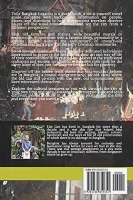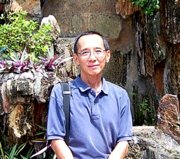- Home
- Bangkok Temples
- Wat Mahapruettharam
Wat Mahapruettharam
old murals and the Reclining Buddha
By Eric Lim
Wat Mahapruettharam (ma-ha-pruet-tha-ram) is an old temple and there are no records as to when it was actually built.
The temple was rebuilt in the reign of King IV (1851 – 1868) and features beautiful murals in the ubosot and a 19 m reclining Buddha in the viharn.
The temple was originally called Wat Tha Kwian as the area was a resting place for water buffalo carts (kwian). After the renovation by King Rama IV, the temple was given its current name and acquired the status of a third class royal temple.
Classes of temples in Thailand
There
are two categories of temples in Thailand; royal temples and common
temples. Royal temples are constructed or renovated by royalty,
constructed by nobility or wealthy persons and dedicated to the king.
Common
temples are built with funds donated by the people, usually the
community living around the temple and others who worship at the temple.
There
are three classes of royal temples and each class is further divided
into grades. Suffixes attached to the name of the temple indicate the
grade of the temple.
For example Wat Mahapruettharam is a third
class temple of the Worawihan grade (second grade); hence the full name
will be Wat Mahapruetttharam Worawihan.
Please see map to Wat Mahapruettharam
Layout of the temple
Here’s a brief orientation to the temple grounds to guide you through your tour of this temple.
Enter the temple through the Mahapruettharam Road entrance where there is an archway. The buildings with the attractive features are within a walled enclosure. Proceed along the road to the north gate. The other gate that’s open on normal days is the east gate.
Please see layout of the temple grounds.
View Wat Mahaphruettharam - layout in a larger map
After entering the north gate you will see three rectangular buildings, one behind the other.
- The first building is Viharn Luang Pho Sukhothai
- The building in the centre is the ubosot with the murals
- The building to the rear is Viharn with the Reclining Buddha
Between the ubosot and Viharn Luang Pho Sukhothai are four prang in a row.
Ubosot
The ubosot or ordination hall is where new monks take their vows when they enter the monkhood. It’s the place where the principal Buddha image is displayed on an altar.
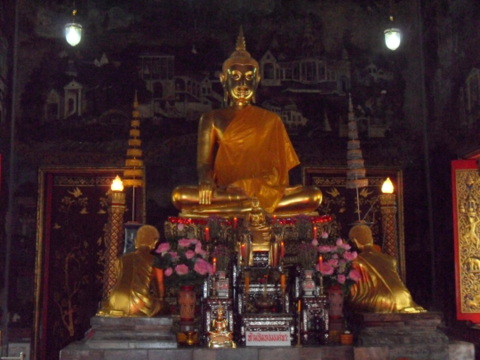
Buddha image in the ubosot
The walls of the ubosot are covered with beautiful murals from just above the floor right up to the ceiling.
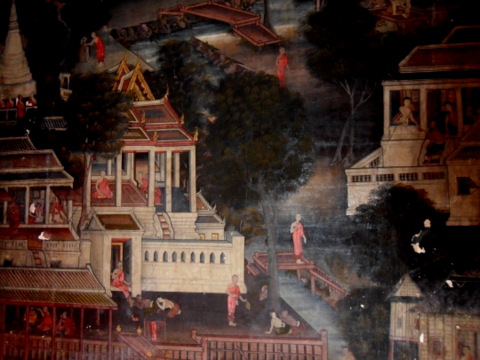
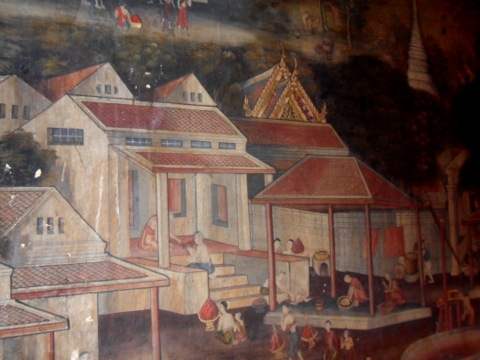
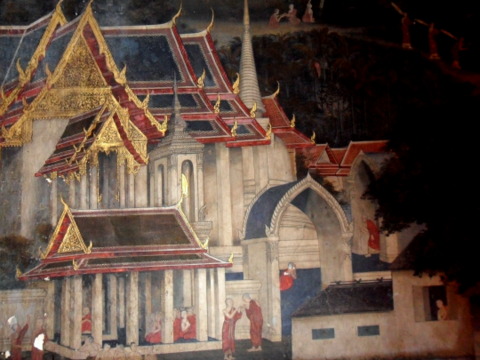
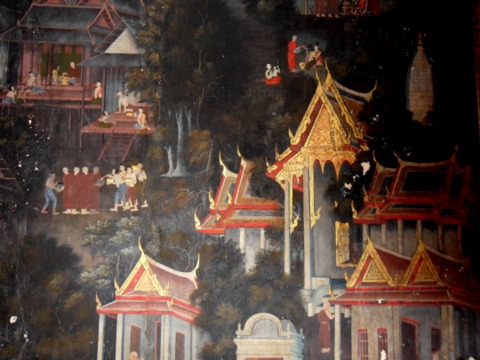
These murals depict the 13 ascetic practices of Buddhism.
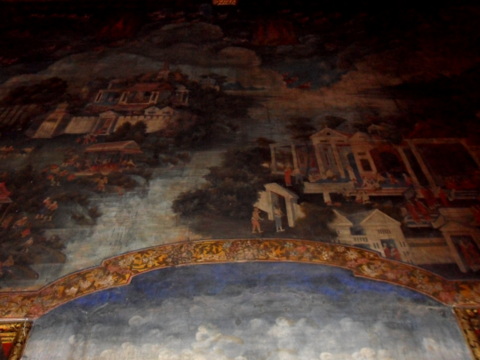
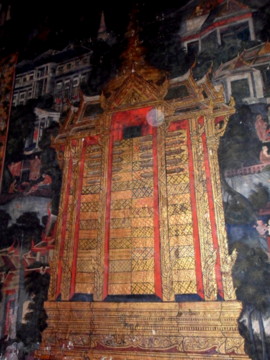
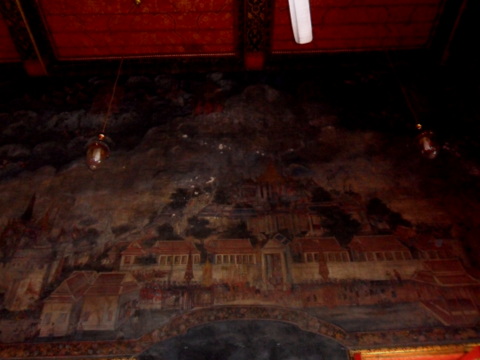
Viharn Luang Pho Sukhothai
The viharn is another building with Buddha images where worshipers can meditate and pray. This viharn was named after a venerable monk (Luang Pho) and there are several Buddha images on the altar.
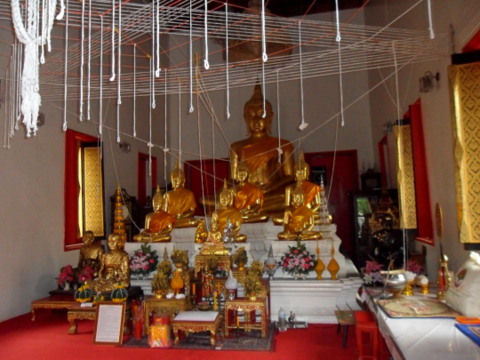
Altar in Viharn Luang Por Sukhothai
Viharn with the reclining Buddha
The other highlight of Wat Mahapruettharam is in the third building, the Viharn with a 19 m reclining Buddha in gold. As a matter of interest, the reclining Buddha in Wat Pho is 46 m.
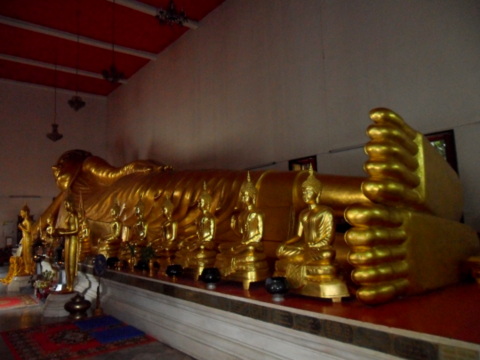
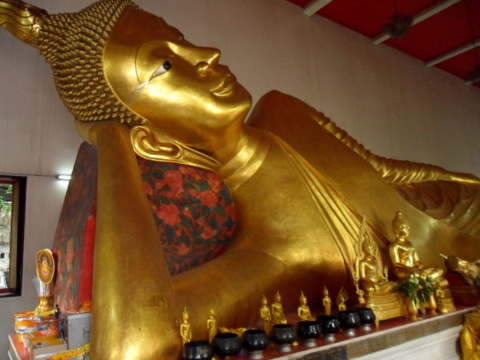
There are also several golden Buddha statues in the standing and sitting positions in this viharn.
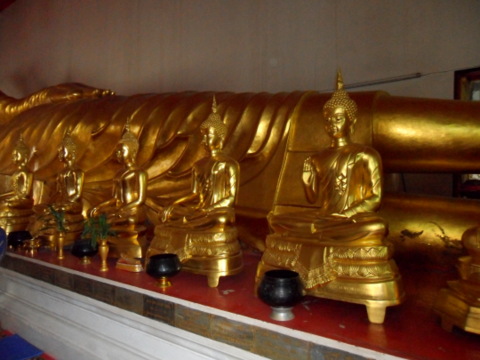
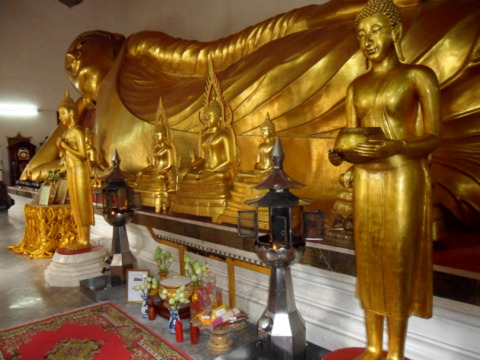
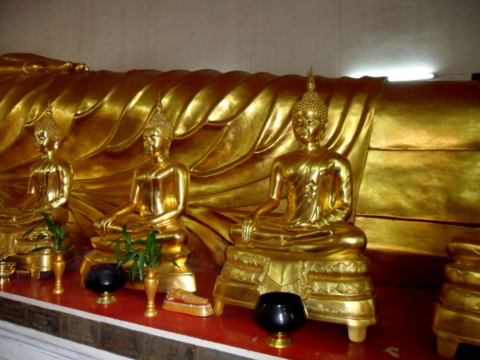
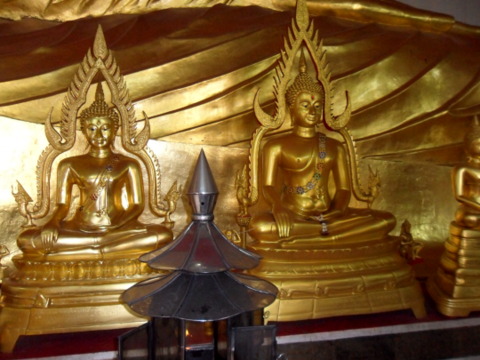
Note
Please remove your footwear before entering these three buildings.
At the Viharn with the reclining Buddha, make a donation of 20 baht for entry. This is the only charge for the visit to this temple.
Prang
Prang is a religious spire of Khmer origin with niches on the sides and elaborate carvings. There are four prang within the wall enclosure.
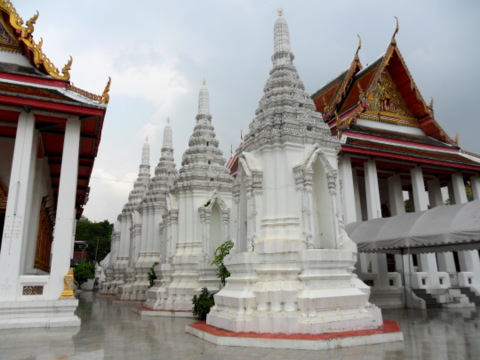
Prang
Other temple features
Here are some of the other attractive features in the buildings in Wat Mahapruettharam.
Chofar is a horn-like structure protruding from the apex of the gable. These structures represent the Naga, the mythical serpent.
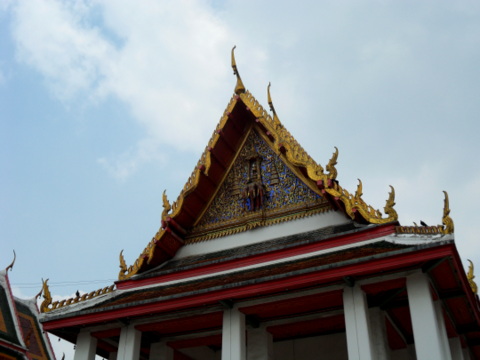
Chofar on the roof of the ubosot
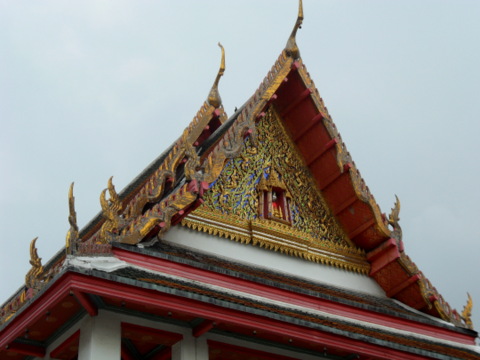
Chofar on the two-tiered roof of Viahrn Luang Por Sukhothai
The doors and window panels of the ubosot and Viharn Luang Por Sukhothai are also worth noting.
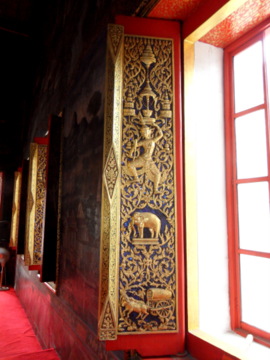
Window panel in the ubosot
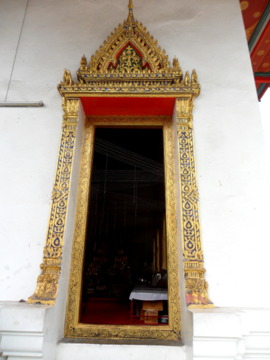
Door to the viharn
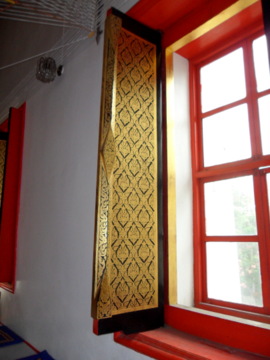
Window panel in the viharn
The Pho tree is where Buddha sat under during his Enlightenment. There is a Pho tree within the grounds of Wat Mahapruettharam.
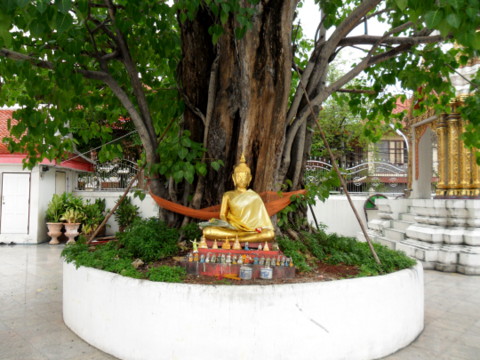
Pho tree
Of course there’s the traditional bell tower (hor rakhang).
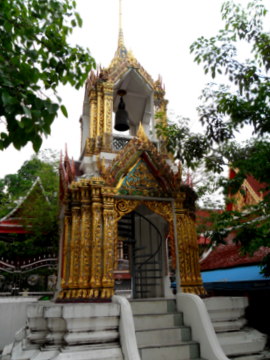
The bell tower (hor rakhang)
There were less than six visitors that morning during my visit to Wat Mahapruettharam. It’s a quiet temple that’s hardly mentioned in tourist guide books or web sites on Bangkok. You won’t get the hustle and bustle of crowds, street vendors, tuk tuk and taxis here.
It’s a wonderful way to spend a peaceful morning admiring the beautiful murals, the golden reclining Buddha and other Buddha statues.
Map to Wat Mahapruettharam
View Wat Mahapruettharam in a larger map
Back to top
How to get there
By Chao Phraya river boat
Take a Chao Phraya river boat from the Sathorn Pier that is below S6 Saphan Taksin Station.
Alight at the N3 Si Phraya Pier near the River City Antique Centre. Take a taxi or tuk tuk to the temple.
By MRT Blue Line
Take the MRT Blue Line to BL28 Hua Lam Phong Station. Then take a taxi to the temple.
By car
If you are driving or taking a taxi, please note that Mahapruettharam Road is a one-way street. You’ll have to come by Rama IV Road. At the Hua Lam Phong junction, turn left into Mahapruettharam Road. Continue on till you reach the temple on your left.
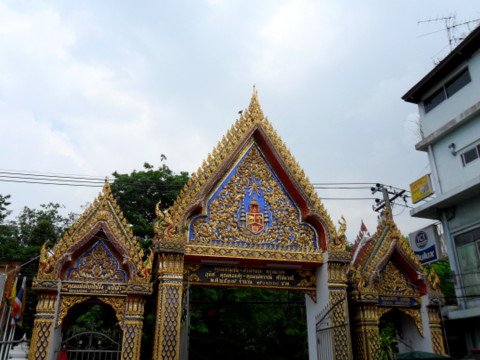
Archway at the entrance to the temple
To return to Bangkok Temples.
Tour Bangkok Legacies - Kindle paperback edition
For those who prefer reading printed books rather than e-books, here's the paperback edition of Tour Bangkok Legacies, which will help you along as you explore the streets of Bangkok and discover its old treasures. It's complete with historical descriptions and directions on how to get to these places.
My Kindle paperback edition
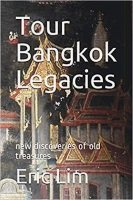
Search Tour Bangkok Legacies with DuckDuckGo
